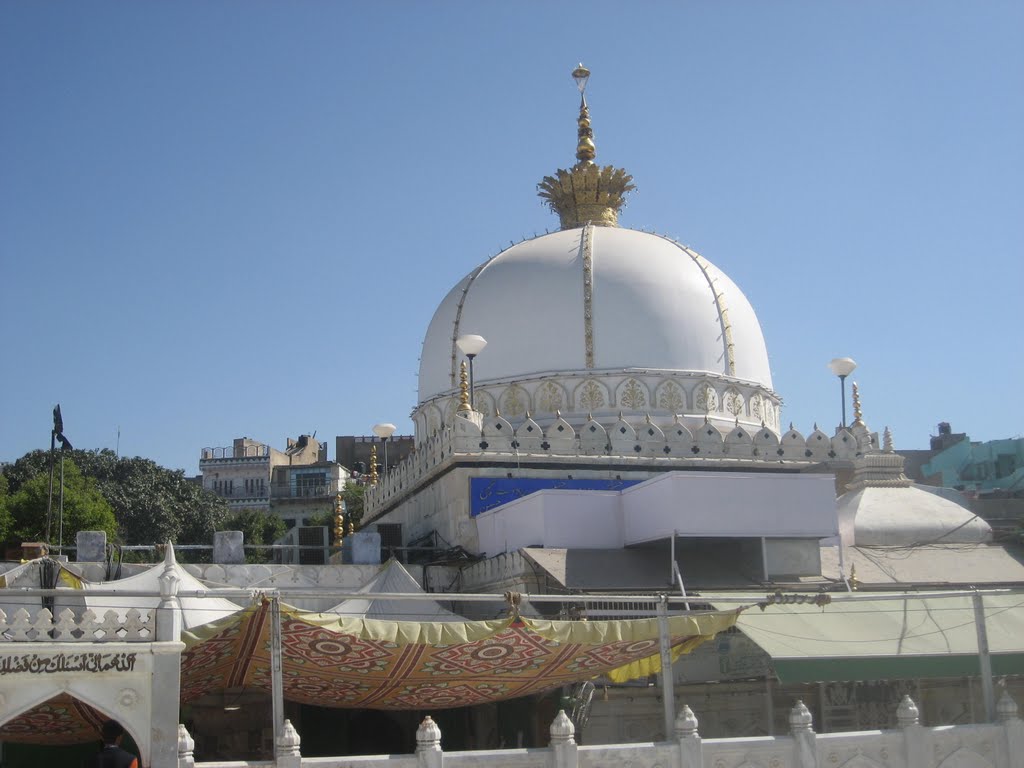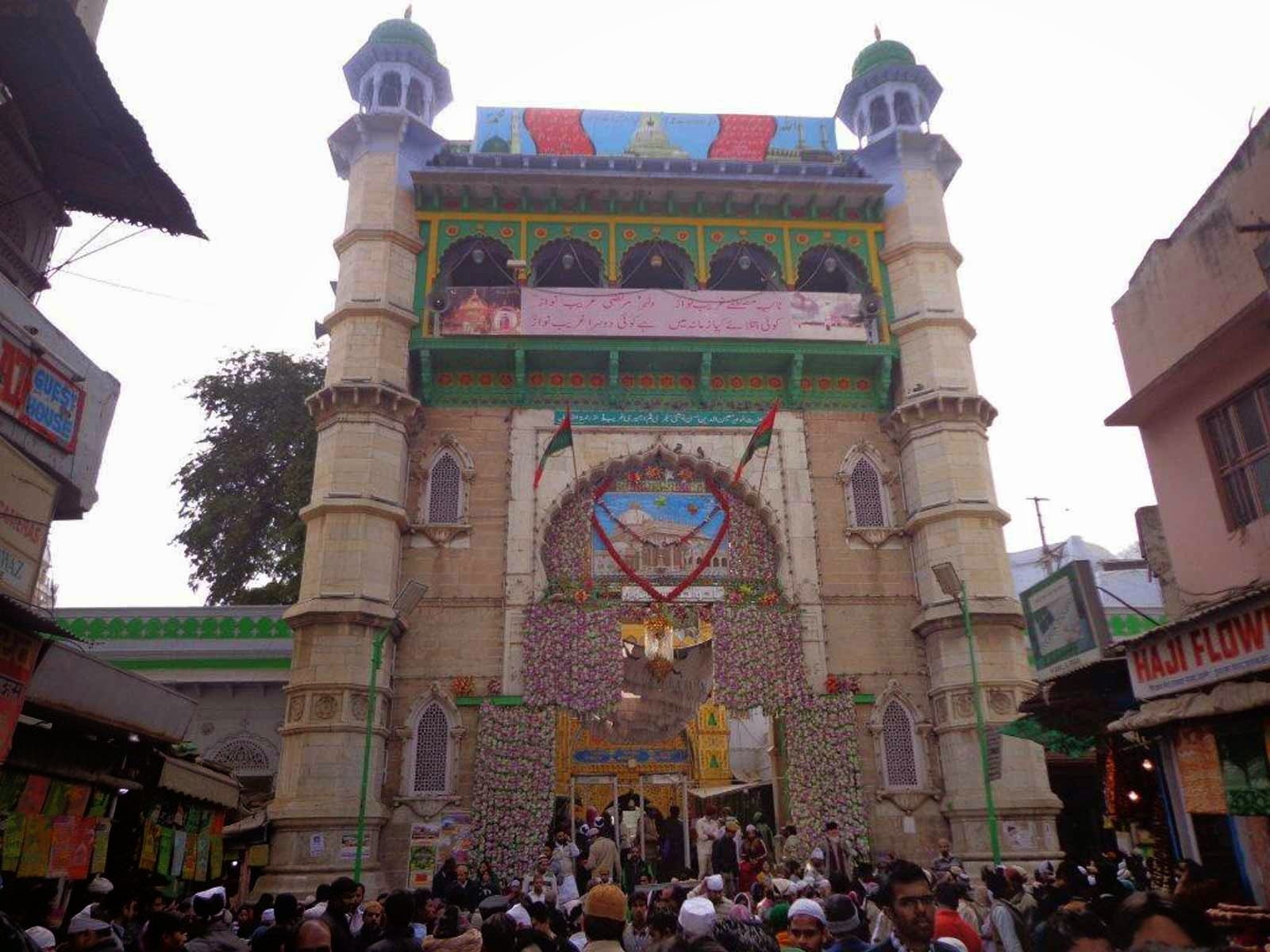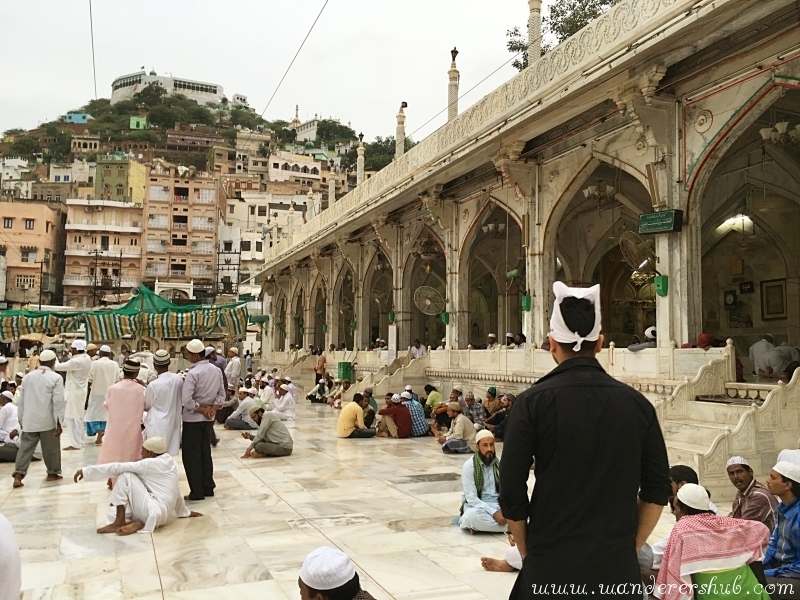


Mohiuddin seems to have been unanimously regarded as a great saint after his passing. The tomb (darg?h) of Mu??n al-D?n became a deeply venerated site in the century following the preacher's death in March 1236. Honoured by members of all social classes, the tomb was treated with great respect by the era's most important Sunni rulers. The 13th-century Sultan of Delhi Iltutmish paid a famous visit to the tomb in 1332 to commemorate the memory of the saint. In a similar way, the later Mughal Emperor Akbar (d. 1605) visited the shrine no less than fourteen times during his reign. He also reconstructed the tomb's sanctum sanctorum in 1579. Jahangir, Shah Jahan, and Jahanara later renovated the structure.[4] An elegant covering over the dargah was constructed in 1800 by the Maharaja of Baroda.[5] Local and national rulers came to pray here, the dargah grew in popularity and size over the years.[6] Razia Sultana, Nasiruddin Mahmud, Muhammad bin Tughluq, Sher Shah Suri, and Akbar and his descendants Jahangir, Shah Jahan, Aurangzeb, Dara Shikoh and Jahanara Begum were known to have visited the shrine.[7] In the present day, the tomb of Moinuiddin Chishti continues to be one of the most popular sites of religious visitation for Sunni Muslims in the Indian subcontinent, with over "hundreds of thousands of people from all over the Indian sub-continent assembling there on the occasion of [the saint's] ?urs or death anniversary." Additionally, the site also attracts many Hindus, who have also venerated the Islamic saint since the medieval period. In 2019, the Hindustan Zinc Limited decided to renovate the complex under the Swachh Bharat Abhiyan, including many plans specifically targeted at sanitation and hygiene.[4][8]